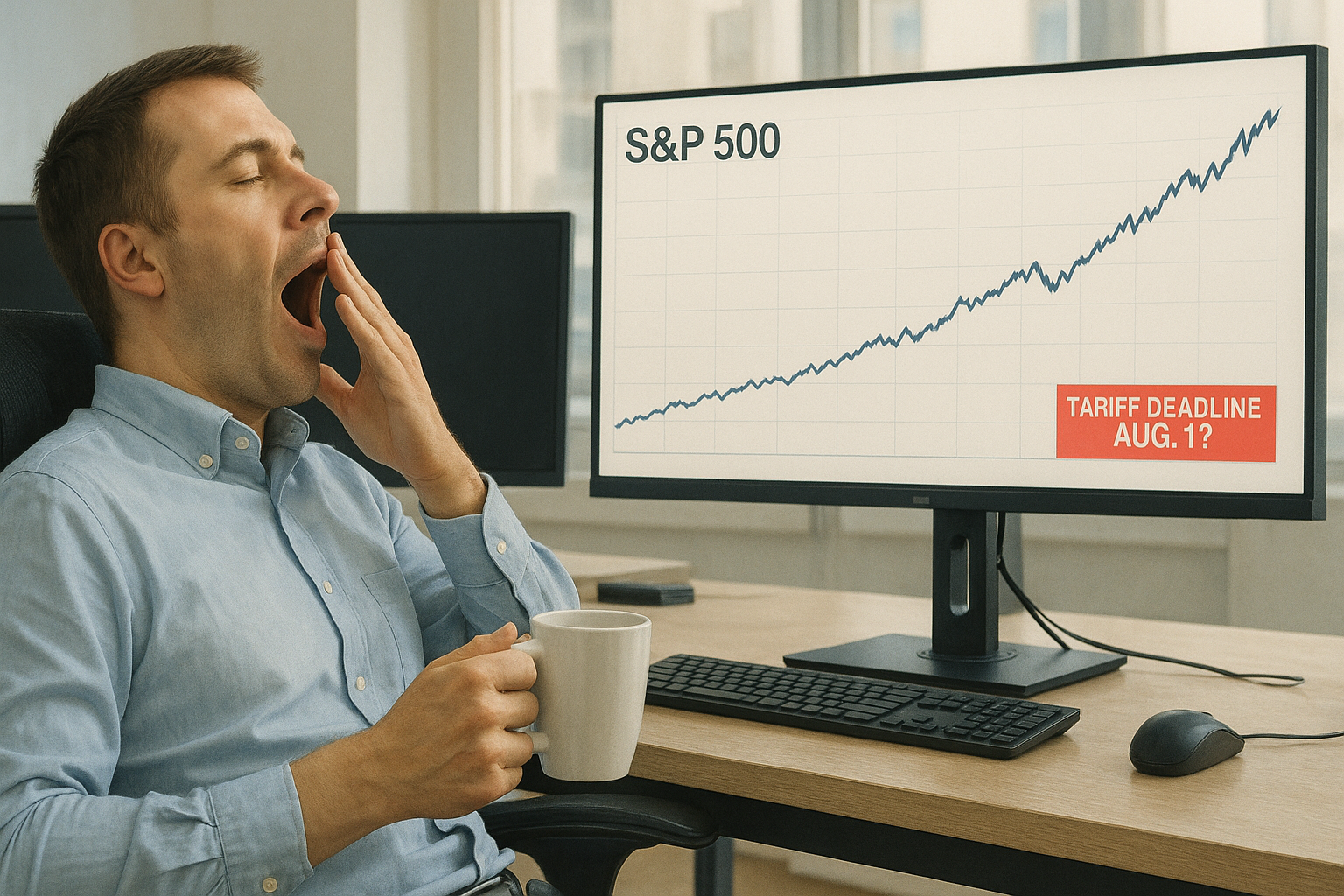Remember when tariff talk sent traders into a tizzy? Those days seem quaintly distant now.
As another deadline looms—August 1st, or maybe the 12th (because why be consistent when you can keep everyone guessing?)—Wall Street has responded with what can only be described as a collective shrug. The S&P 500 keeps notching fresh records while former President Trump threatens new tariffs on China and Russia, and simultaneously promises to arm Ukraine with "devastating weapons" if peace talks hit a wall.
Quite the contrast from April 7th, isn't it? That date—seared into many investors' memories—triggered what some called a mini "tariff tantrum." Now? Crickets.
I've been watching market reactions to political threats since the first trade wars kicked off, and what we're seeing here looks an awful lot like psychological adaptation. Markets, just like people, build tolerance to repeated alarms. The fifth time your neighbor threatens to call the HOA about your fence, you barely look up from your coffee.
So what gives?
For starters, there's the credibility factor. When politicians constantly threaten tariffs but implementation dates keep shifting, traders start discounting the whole show. They've seen this movie before—often the scariest scenes end up on the cutting room floor.
There's also something I'd call the "preparation effect." That April scare? It gave companies months to run scenarios, adjust supply chains, and hedge positions. The bogeyman isn't nearly so frightening once you've measured him for a suit.
But the real story might be what's happening on the other side of the ledger. Have you seen these earnings reports? When PepsiCo can raise prices, maintain volume, AND beat expectations, it sends a pretty clear message: maybe these corporations are more resilient than we thought.
The market seems to be saying, "Yeah, tariffs could happen. But we've been there before, and look—we're still standing."
This doesn't mean an actual August tariff implementation wouldn't rattle cages. It would. But the magnitude? What might've triggered a 10% correction in 2018 might now cause a 3-5% hiccup—the kind that gets bought faster than concert tickets for that reunion tour everyone pretended they didn't care about.
Look, there's danger in this complacency. Markets are notoriously terrible at pricing non-linear risks. Supply chains that appear bulletproof can suddenly reveal fatal flaws. And let's not forget—tariffs are inflationary, something the Fed is surely watching with furrowed brow.
So what should you actually DO with this looming August deadline?
Probably nothing dramatic. If your portfolio weathered April's storm warnings, you're likely positioned well enough for this sequel. The time to panic about tariffs was before everyone and their financial advisor was talking about them at cocktail parties.
What fascinates me most is watching this market psychology evolve in real-time. Today's breaking news becomes tomorrow's background noise faster than ever. It's adaptation on steroids.
For now, the market's message seems pretty clear: "Wake me when the tariffs actually hit—and even then, I might just hit snooze."
Until then, we'll all keep watching those all-time highs with a mixture of wonder and wariness. Because that's the thing about markets—they climb walls of worry until suddenly, for reasons often clear only in hindsight, they don't.
